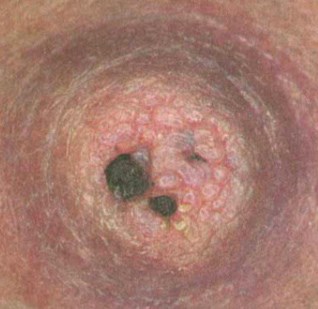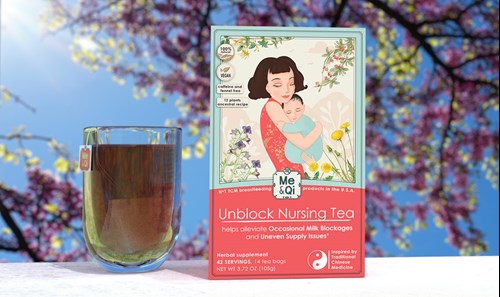Contents
- What is scab nipple?
- Pictures of Scab Nipples
- Is It Normal To Have Nipple Scab?
- Is It Safe To Continue Breastfeeding With Nipple Scabs?
- Causes Of Nipple Scab
- How To Prevent Scabbed Nipple From Breastfeeding?
- How To Heal Scabbed Nipples From Breastfeeding?
- How Long Do Scabbed Nipples Take To Heal?
- Frequently Asked Questions
What is scab nipple?
A scab nipple is a normal response to chapped nipple. It can be triggered by different factors, including breastfeeding and friction from clothing.
When cracks appear on nipple skin, platelets, the clotting cells found in your blood, and the clotting proteins such as protein fibrin start the clotting process. This process forms blood clots on the nipples.
When this clot dries out and hardens, it becomes a scab. The function of the scab is to keep wound germs free and allow the cells beneath the wound to heal.
Pictures of Scab Nipples

A scab nipple may appear red, swollen, and may have blisters, and fissures on it. In addition to these symptoms, a mother will observe dark, white patches with a yellow crust. Occasionally, pus or peeling can also be seen on the crusty nipples.
This condition may affect the nipple, areola, or the whole breasts. In this case, you need to keep a close eye on it, observe for symptoms of infection, and take it easy in the bedroom.
Sometimes, a nursing mother may also observe a black scab on nipple, this could be a sign of nipple necrosis. It is a more severe condition and may require surgical treatment.
Is It Normal To Have Nipple Scab?
Yes. It is not unusual to have a nipple scab, which is merely a crack in the skin. They may heal within a few days. The most common reason for scabbed nipples in mothers is poor latching by the baby during breastfeeding. This cause is preventable, by practicing good latching techniques.
However, if you are experiencing nipple scabs for more than 3 weeks or have a black scab on nipple, you may need to consult with a doctor's quickly.
Is It Safe To Continue Breastfeeding With Nipple Scabs?
- For The baby:
It's mostly safe for the baby, even though they will touch the scabbed nipple with their mouth. Some of the bacteria from the infected nipple could be passed on to the baby through the cuts on his/her mouth. In rare cases it may cause thrush.
However, there is more benefit in continuing to give breast milk instead of weaning. That is because breast milk is the best food for a newborn to build their immune system.
- For The Mother:
The baby can also transfer bacteria to mother via breast mouth contact. In fact, this is often what causes nipple cracks or scabs to start with. Also, direct nursing while having nipple scab can cause a lot of pain or your nipple condition may worsen as the baby sucking irritates the skin further.
In this case, we suggest using nipple shields during direct feeding. You can also try a pumping machine or hand expression and then bottle feeding as an alternative to mouth-to-breast feeding.
Causes Of Nipple Scab
- Poor nursing techniques
The most common cause of scab nipple is breastfeeding. If a baby doesn’t latch correctly, is poorly positioned, or has issues such as tongue tie, it is more likely to have small cracks appearing in the nipple skin associated with sharp and shooting pain.
If breastfeeding continues, cracks, blebs or blisters may appear on nipples. They may bleed and give a sticky discharge. All these gradual skin changes can cause a scab to form.
- Sports
In addition to breastfeeding, strenuous physical activities are also a cause of scab nipples. If you frequently work out in gym, or do cycling or running, during motion your clothes or sports bra may rub against your nipple. This can cause chafing, which could lead to a scab.
- Breast Eczema
Breast Eczema is a skin condition, characterized by an itchy rash and dry scaly skin that fall off the nipple. Most frequently, this condition is triggered by an allergic reaction to soaps, certain materials, detergents, and other potential irritants such as breastfeeding. It typically forms scabs on the areola and breasts. Eczema may also cause nipples to become so irritated that they bleed and form scabs.
- Paget Disease
It is a rare disease linked to breast cancer. It produces eczema-like changes in the nipple skin and the areola. Typically, it indicates breast cancer in the tissue behind the nipple. It also forms scabs on the breasts.
- Nipple Injury
Sometimes a nipple becomes damaged during the sexual engagement, excessive suckling by the baby, or rubbing of the nipples by poorly fitting bra.
- Burns
Going shirtless in tanning beds or exposing the body to the sun for an extended period can cause sunburn and burn the nipples. This could result in peeling or scabbing.
- Breast Infections while breastfeeding
Breast infections are not uncommon among breastfeeding women. Bacteria can easily get transmitted from the infants to the mother via nipple-mouth contact. As the skin there is very sensitive, the infections often result in nipple cracks and fissures, that eventually forms scab on the nipple.
How To Prevent Scabbed Nipple From Breastfeeding?
Nursing women can easily prevent the development of scabbed nipples from breastfeeding by using proper latching techniques and positioning of the baby. Proper techniques and positioning reduce the stress on the nipples as the baby does not have to suck hard to drink milk.
In addition, it is necessary to keep the nipple moist and free of cracks while breastfeeding. You can do this by:
- Keeping your breasts and hand clean to prevent an infection.
- Apply purified lanolin or breast milk to soothe the aching nipple after each feed.
- Wear well-fitting bras, because too-tight or too-loose ones may cause chafing. The bra fabric should also be breathable and moisture-wicking.
How To Heal Scabbed Nipples From Breastfeeding?
Home remedies to treat scabbed nipples from breastfeeding are:
- Lubricate and moisturize the affected region
In case of swelling and itching associated with scab on nipple, you can use low-dose steroid creams (e.g., 1 percent hydrocortisone) for short term relief. This cream is generally safe to apply but should be wiped out before breastfeeding to prevent any residue transfer to the newborn. Or you can try some special nursing creams such as Medela Tender Care Lanolin which does not require cleaning as they are comparatively safe for the baby.
- Use A Pumping Machine
If your scabbed nipples are causing you so much pain that you feel you must wean, don't panic! You can still express milk with a breast pump. This will give your nipple a break while allowing you to continue providing your baby with all the benefits breastmilk offers.
It prevents direct contact between the nipple scabs and the baby's mouth. On top of that, the machine’s suction power is controllable, thus you can try lower degrees to avoid further irritation on the irritated nipple.
- Use Nipple Shields During Breastfeeding
During breastfeeding, use a nipple shield to avoid direct contact between the scab nipple and the baby's mouth to prevent further skin irritation.
- Keep Your Breasts Clean After Each Feed
Clean the breasts after each feeding and leave them dry. That is because bacteria from a baby's mouth can enter your body via skin cuts and causes infection. For this purpose, you can use Epsom salt water to clean your breasts. Salt is antibacterial and kills bacteria by making them dry.
- Apply Peppermint Essence
Research indicates that nursing mothers who apply peppermint essence to the nipples after feeding have observed significantly reduced discomfort and faster healing of irritated nipples.
- Reduce Physical Activities
As we have already mentioned, physical activities can cause nipple scabs. Therefore, you may need to temporarily cease these activities.

- Use Unblock Nursing Tea
This well-balanced formula is the only herbal tea in the market that help with engorgement, clogged milk ducts, blebs, blisters, cracks, scabs and etc.
It contains many cooling herbs such as Dandelion, Honeysuckle flowers and Chrysanthemum flowers.
How Long Do Scabbed Nipples Take To Heal?
Scabs on the breasts or the nipples often resolve in a couple of hours or a couple of days. However, chronic and severe scabbed skin wounds may require up to two or three weeks to heal completely, even after the cause of the pain has been eliminated. It also depends upon whether you have applied above home remedies or not.
Frequently Asked Questions
- Do Scabs Heal Faster Dry Or Moist?
According to the “American Academy of Dermatology”, keeping cracks moist aids in healing and accelerates the recovery process. A dry wound forms a scab rapidly and delays the healing process. Additionally, moisturizing scabs or wounds helps prevent them from growing and reduces itching and scarring.
- Should You Cover A Scab Or Let It Dry Out?
Airing out most scabs is unhelpful, as wounds require moisture to heal. if a wound is left exposed, new surface cells may get dry which can increase discomfort and delay recovery.
- How Long Before A Scabs Fall Off?
Typically, a scab will fall off within a few days to a week. During this time, a nursing mother can take measures to promote fissure healing and decrease the risk of scarring.
- Should I Put Vaseline On the Scabs?
Yes, applying Vaseline on scab nipple is totally safe. Even the American Academy of Dermatology” suggests keeping a wound moist to aid in the healing of injured skin. They recommend applying petroleum jelly to prevent the skin from drying out, promote healing, and minimize scarring. A nursing mother can apply Vaseline on nipple after each feed or pumping and then clean the nipple before feeding again.
- What Does Infected Scab Look Like?
The skin surrounding the wound feels warm to the touch. The mother feels pain assonated with redness and edema. The yellow crust on the nipple appears with foul foul-smelling pus.
- Should You Keep a Scab Moist?
Yes, you should keep a scab moist. That is because if the wound environment is dry, cells must find moisture deep within the wound bed in order to migrate. This inhibits the recovery process. According to studies, wet wounds heal 50% faster than dry ones.
- What Is A Scab That won't Heal?
A scab that heals gradually is known as a chronic form of a scab. The poor healing could be due to infection, diabetes, skin cancer, or burn.

